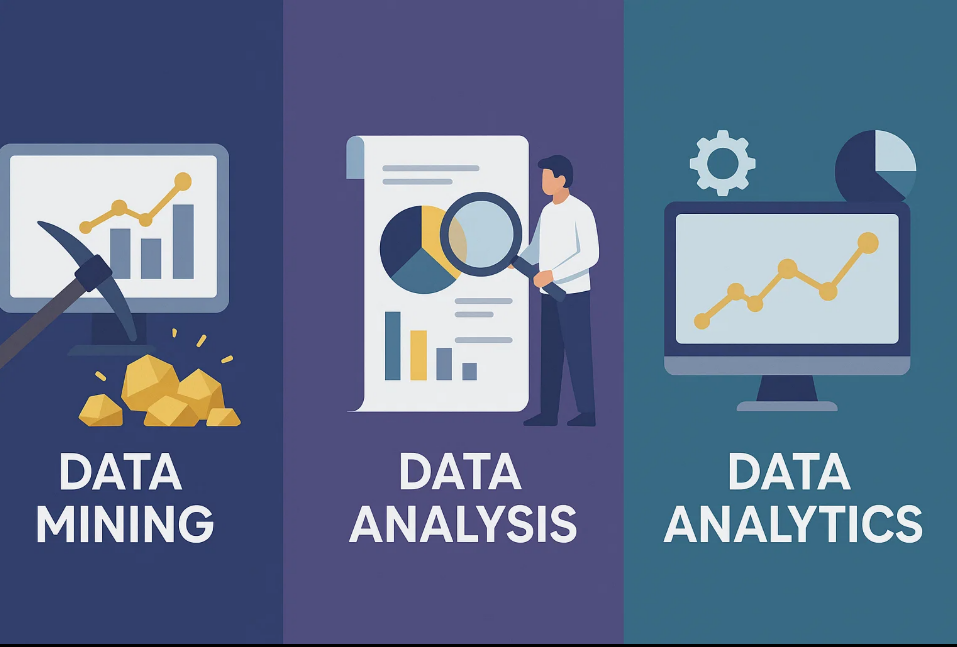
In today’s digital enterprise landscape, data is the new fuel—but how you extract, understand, and apply it determines your competitive edge. Terms like data mining, data analysis, and data analytics are often used interchangeably. However, each has a distinct role in how businesses, especially in manufacturing, convert raw data into intelligent decisions.
In this blog, we’ll define the differences and show how these capabilities work together to drive outcomes—with a special focus on manufacturing use cases.
🔍 What Is Data Mining?
Data mining is the process of extracting hidden patterns or relationships from large datasets. Unlike traditional reporting, it involves scanning data to uncover trends or rules not previously known—often using machine learning or statistical algorithms.
📌 Key Characteristics:
- Uncovers hidden or non-obvious insights
- Utilizes clustering, classification, and association rules
- Deals with vast, often unstructured data
- Useful for anomaly detection, pattern recognition
🧠 Example – Manufacturing:
A global pump manufacturer collects real-time sensor data from factory machines. Using data mining, they discover that a specific vibration pattern always precedes a bearing failure—insight they hadn’t encoded or expected. This leads to new maintenance protocols.
🧪 What Is Data Analysis?
Data analysis is a more manual or semi-automated process of examining structured data to validate known hypotheses or derive insights. It focuses on understanding what’s happening, why, and what it means.
📌 Key Characteristics:
- Deals with structured, often cleaned data
- Supports diagnostic and exploratory assessments
- Often tool-driven (e.g., Excel, Power BI, Python)
🧠 Example – Manufacturing:
An operations analyst investigates why downtime increased last quarter. Analyzing historical equipment logs, they correlate downtimes to shifts with low staffing and suboptimal machine configurations, suggesting targeted training and schedule changes.
🤖 What Is Data Analytics?
Data analytics is the overarching discipline that includes mining, analysis, and applying algorithmic or statistical models to extract actionable intelligence. It spans descriptive (what happened), diagnostic (why), predictive (what will happen), and prescriptive (what to do about it).
📌 Key Characteristics:
- Applies models to forecast or optimize outcomes
- Supports real-time and strategic decisions
- Drives automation, alerting, and decision support
🧠 Example – Manufacturing:
The pump manufacturer uses analytics models to:
- Predict failure probabilities for machines
- Optimize production schedules based on demand
- Simulate different maintenance strategies to minimize cost and downtime
By integrating Azure ML, Power BI, and Golang-based IoT agents, the company now receives automated alerts and optimization suggestions.
🏭 Manufacturing Use Case: Bringing It All Together
Let’s walk through a unified scenario to illustrate the relationship:
🧩 Scenario:
A manufacturer of industrial pumps wants to minimize unplanned downtime and optimize production efficiency.
| Phase | Action |
| Data Mining | Discover that machines with inconsistent motor temperature patterns tend to fail 3–5 days later. This pattern wasn’t previously known. |
| Data Analysis | Validate this pattern across other production lines and factories to confirm it’s consistent. |
| Data Analytics | Build and deploy a real-time predictive model on Azure IoT that monitors sensor data, scores failure risk, and triggers alerts and maintenance work orders via Power Automate and Teams. |
🎯 Outcome: A 30% reduction in unplanned downtime and improved OEE (Overall Equipment Effectiveness) across 3 global facilities.
🔁 Key Differences in a Nutshell
| Concept | Purpose | Role | Tools Often Used |
| Data Mining | Discover unknown patterns | Hypothesis generation | R, Python (scikit-learn), SQL |
| Data Analysis | Validate, interpret data | Hypothesis testing, root cause | Power BI, Excel, Python, Tableau |
| Data Analytics | Derive and apply insights | Decision-making, prediction, alerts | Azure ML, Databricks, BigQuery, Golang (for services) |
🧠 Why CXOs Should Care
Understanding the distinction helps organizations:
- Choose the right skill sets and platforms
- Align efforts with business outcomes
- Shift from reactive to predictive and prescriptive operations
- Drive digital transformation in core functions like manufacturing, supply chain, and finance
🚀 Conclusion
If you’re a digital leader in manufacturing, the difference between mining, analysis, and analytics is more than semantics—it’s about strategy. From anomaly detection on the shop floor to predictive maintenance and intelligent quoting, these capabilities enable you to act smarter and faster.



